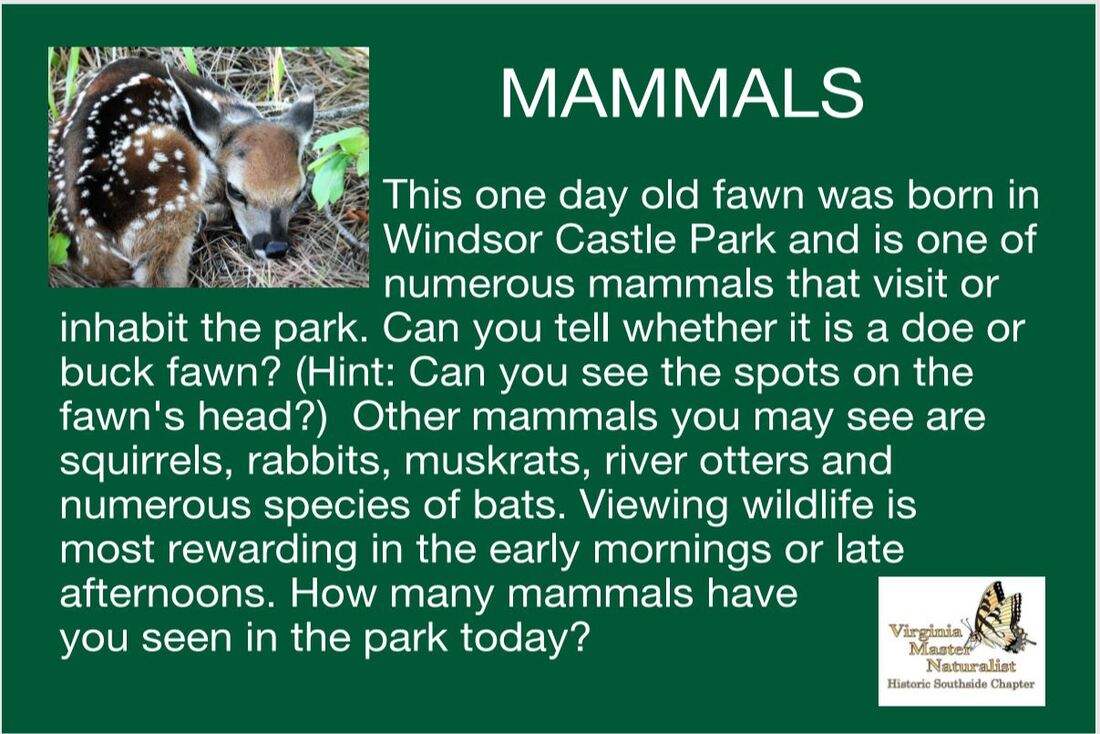Introduction
Among the different kinds of organisms that live in WCP are mammals—the group to which we humans belong. Mammals share several characteristics including having hair or fur, mammary glands, 3 inner ear bones and being able to regulate their heat through metabolism. The mammals that may inhabit WCP year-round are deer, rabbits, squirrels, raccoons, bats, opossums, red and grey foxes, muskrats, mink and coyotes. Coastal bottle nosed dolphins (which are mammals) may be occasionally seen in Cypress Creek.
Some facts to consider
Among the different kinds of organisms that live in WCP are mammals—the group to which we humans belong. Mammals share several characteristics including having hair or fur, mammary glands, 3 inner ear bones and being able to regulate their heat through metabolism. The mammals that may inhabit WCP year-round are deer, rabbits, squirrels, raccoons, bats, opossums, red and grey foxes, muskrats, mink and coyotes. Coastal bottle nosed dolphins (which are mammals) may be occasionally seen in Cypress Creek.
Some facts to consider
- Thanks in part to their bigger brains, mammals tend to be more socially advanced than other types of animals. Examples of social behavior in mammals include the herd behavior of cattle and sheep and the hunting prowess of wolf packs.
- One major difference between mammals and other major vertebrate families such as amphibians, reptiles, and fish is that all mammals give birth to live babies, which are then fed on their mother’s milk. Most newborns mammals require at least some parental attention in order to thrive.
- One of the most amazing things about mammals is the many different environments mammals live in. There are swimming mammals (whales and dolphins), flying mammals (bats), tree-climbing mammals (raccoons and squirrels), burrowing mammals (moles and rabbits), and countless other varieties.








